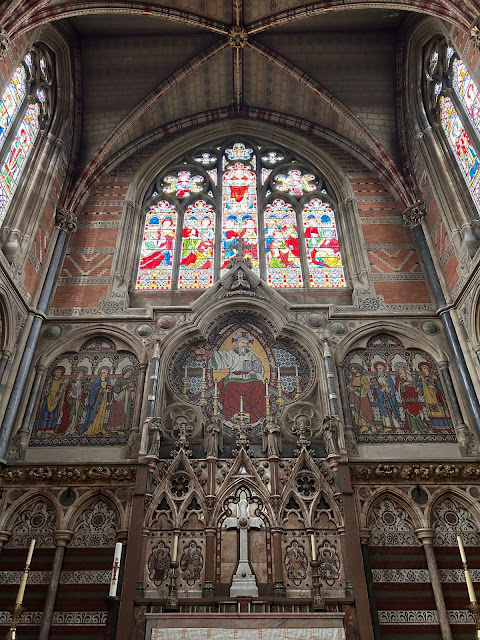Cloudy Grey Afternoon Musing --
When do ideas come to you? When do you capture ideas and how? Is there quiet, thinking time a certain time of day? Is there a place, a time, a method? Do you thrive on routine or on flexibility?
Now the last day of many days
All beautiful and bright as thou,
The loveliest and the last, is dead,
Rise, Memory, and write its praise!
(Percy Bysshe Shelley)
Or, is it from your memory? Learning is a lifelong process and often something we learn about, read about, or experience comes back to us via memory. Either in an "ah ha" moment or a gentle reflection that reveals something.
Fleeting like a fully bloomed flower, ideas tend to burst forth with wonder and delight, but if you don't capture it in some way, it fades and droops, and might be hard to retrieve again. This is a big reason why I journal and everyday let out some thoughts, even if it's not anything earth-shattering.
I coyly inserted a little quote from Percy Bysshe Shelley as he was known for his big (atheist) ideas that got him expelled from Oxford, just down High Street, in fact, at University College. Despite his aversion to Christianity, his poetry is rather brilliant and not without lots of Christian imagery and language.
Turl Street in Oxford is one of my favourite streets. It connects Broad Street and High Street, so it a very handy path, but also is a central smaller street that is a source of many branches of paths diverging from it. It not only offers the cut-through to High Street from Broad Street, but along the way, it also provide a branch directly to to the Radcliffe Camera (Brasenose Lane) and then the other direction toward Cornmarket via Ship Street or Market Street. There are great shops along Turl, like Oxfam bookshop, The Missing Bean coffee shop, and some of the loveliest colleges (Exeter, Jesus, Lincoln). One of my favourite restaurants used to be there (a victim of Covid time). A spire can be seen at the end where High Street greets it (it used to be a church, now the Lincoln College Library). And a huge Horse Chestnut tree stands on the corner of Turl and Ship Streets behind the Jesus College wall, branching well above and over it to provide shadows and beautiful greenery to anyone along Turl Street.
Turl Street can be really busy sometimes, it can get congested with delivery trucks and bikes, students, tour groups, and construction/restoration projects. The moments when I can capture it in a stillness is fleeting, and I try to embrace it almost by instinct whenever I turn onto Turl Street. I find that I reach for my phone to see if I will be able to snap a photo of the delightful street. The way the road curves ever so slightly as it approaches High Street is visually appealing, with the lines of shops on the right and Lincoln College on the left.
So when I think of ideas, I think of Turl Street as the guide - the street that leads to all kinds of directional paths branching off. It's one small road with 5 different possibilities. It's this visual and real life exhibit of how one idea has the ability to branch off into many ideas depending on where we take it. As humans, we have these amazing capabilities to plan, strategize, make choices, learn, adapt, change our mind, re-design. It's with a sense of appreciation and wonder I think of ideas and how we use them as the catapult into some exciting.
















